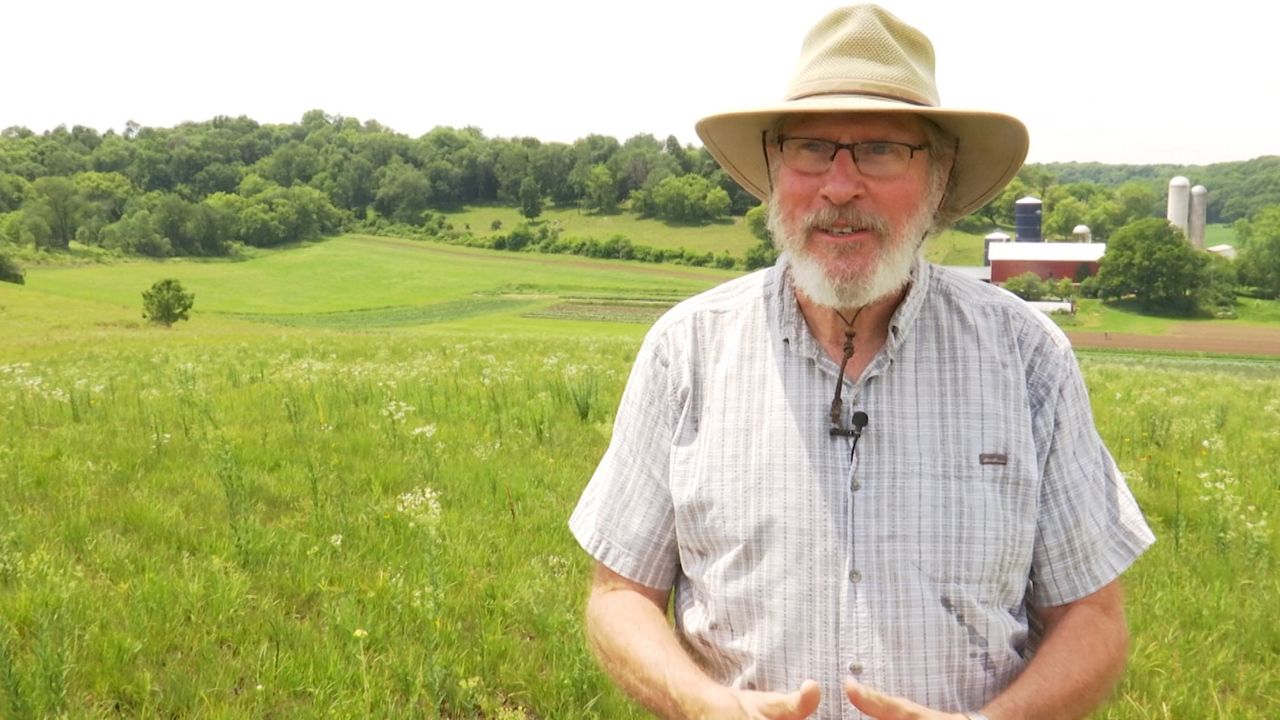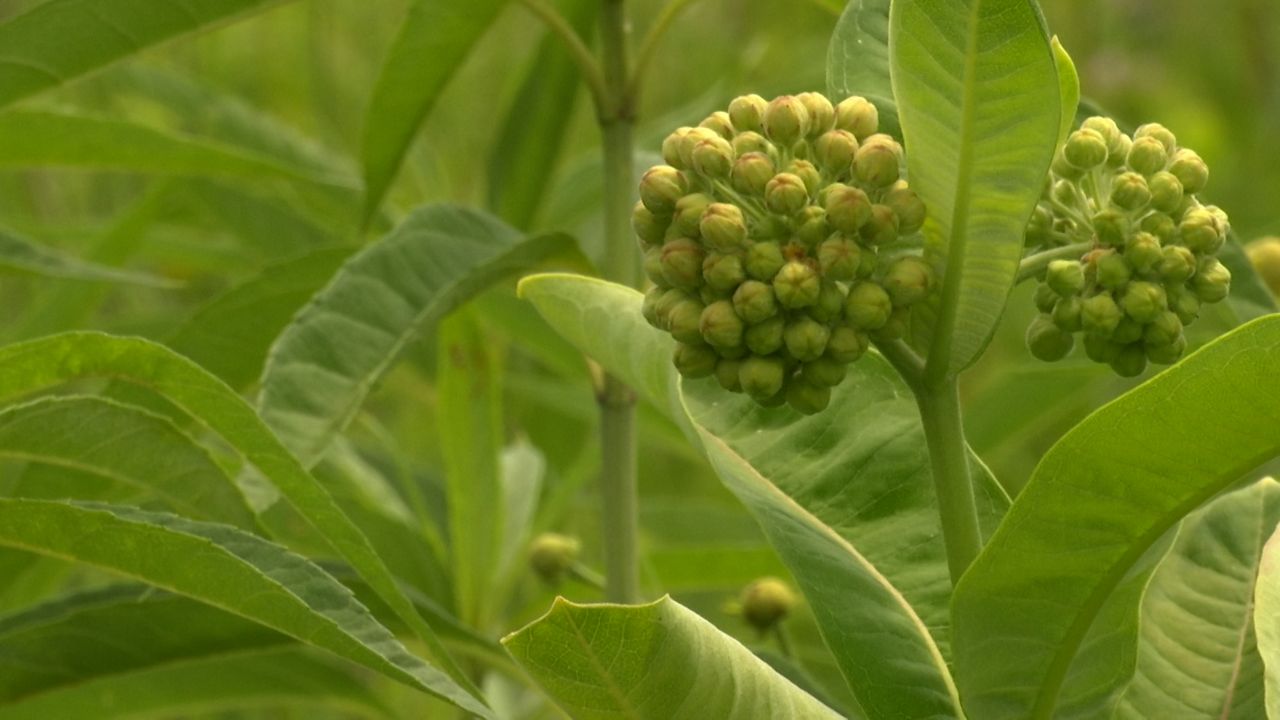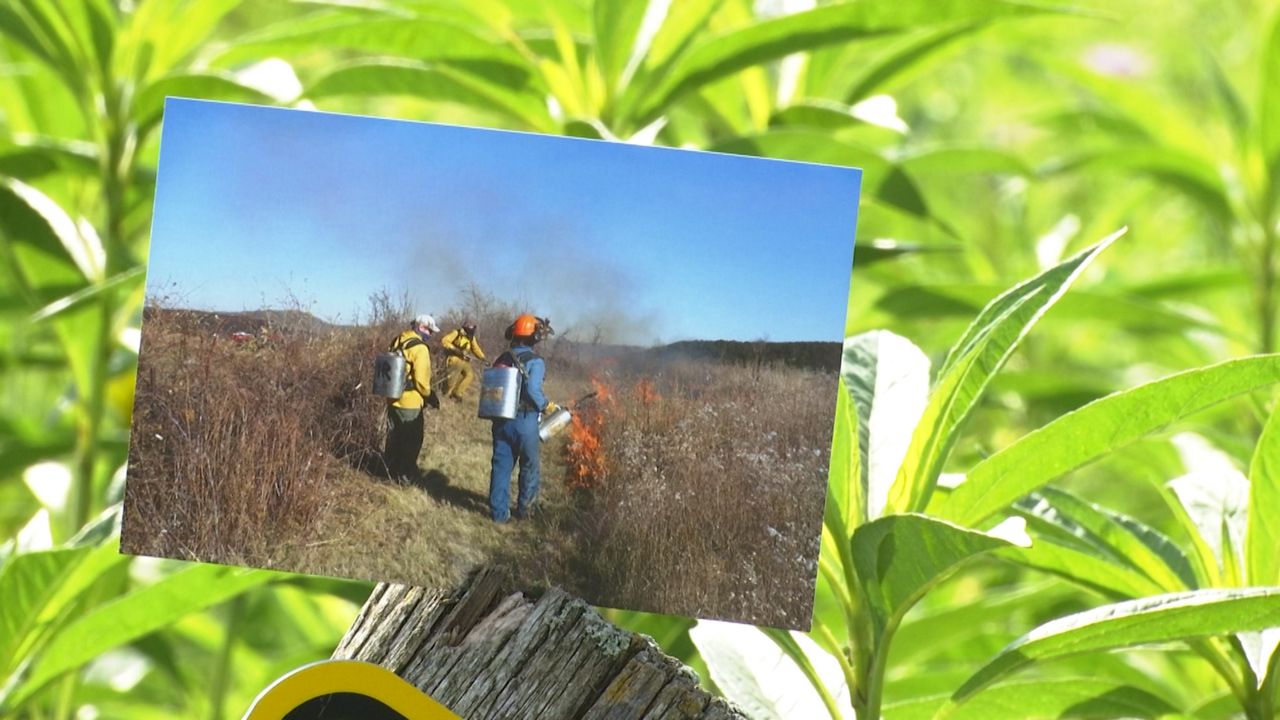BLACK EARTH, Wis. — Much of Wisconsin's natural landscape is prairie, but development has removed large chunks of it. One Wisconsin group is working to conserve and expand prairies to keep up on the natural resource that they can be.
What You Need To Know
- Much of Wisconsin's natural landscape is prairie land
- The Prairie Enthusiasts work to conserve and restore prairies in Wisconsin and the Midwest
- Prairies help with water quality, flood mitigation, carbon sequestration, and wildlife habitat
Like a museum tour guide, Scott Fulton walks through a piece of prairie in Dane County and describes its place in Wisconsin natural history.
“This is probably what a lot of the landscape actually looked like before European settlement in the early 19th century,” Fulton said.

Unlike most prairies like it, the Black Earth Rettenmund Prairie has never been plowed or developed.
“The fact that it was not plowed means that these plants and seeds and everything kind of stayed here undisturbed,” Fulton said.
The prairie is part of the nearly 40 thousand acres of land that the Prairie Enthusiasts own or manage, where Fulton serves as the group's president.
“I think this sort of serves as a model and it's something that if we didn't protect it it would completely disappear,” Fulton said.

Earth's vegetation is changing as fast as it did during the Ice Age, according to University of Wisconsin geography and climate professor Jack Williams. Organizations like the Prairie Enthusiasts conserving and restoring land makes a big difference.
“One of the things we've definitely learned from the past is that when climates change, species move and one way we can help those species is helping this movement across these modern, fragmented, very much transformed landscapes,” Williams said.
The Prairie Enthusiasts use burning techniques that indigenous populations used to use to keep the land healthy. The Rettenmund Prairie was burned last fall.

“I think this is one of the most biodiverse sites in the entire state of Wisconsin, it has over 130 different plant species on it,” Fulton said.
The Prairie Enthusiasts will use seeds from the Rettenmund Prairie and other healthy prairies to help grow and restore other prairies in the three states they work in — Wisconsin, Minnesota and Illinois. Heathy prairies help with water and runoff management, improving soil health, sequestering large amounts of carbon and providing habitats for wild animals.
“We need to understand how to re-create these systems and keep them healthy, and having the original model here to look at is we think essential for doing that,” Fulton said.



